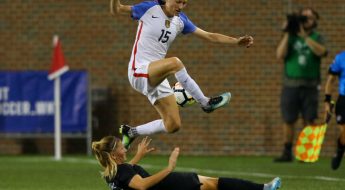Perfect player series: Building a flawless attacking midfielder




Courtesy: Reuters’ John Sibley, Alberto Lingria, Hannah McKay
Every footballer on the planet has blemishes – weaknesses in their game they wish didn’t exist. But what if they didn’t? What would the ideal player look like in every position? Plucking specific traits from various superstars, theScore is diving into the lab to build the perfect footballer.
Complete series:
In the fifth installment of our seven-part series, we’re assembling the perfect attacking midfielder: a No. 10 with an eye for a pass, the quickness to cause havoc, and the dribbling ability to create something out of nothing.
Vision: Mesut Ozil (Arsenal)

No, this isn’t a joke about his eyes. Mesut Ozil’s game is always under the microscope. His slumping shoulders and perceived lack of “fight” – whatever that means – garner unfair criticism from pundits who suggest he doesn’t work hard on the pitch because he isn’t constantly moving at hyper-speed like teammate Alexis Sanchez. In truth, he’s able to operate at a different pace than everyone else, using his superior vision to slow the game down before picking out inch-perfect passes. He’s a dying breed in a modern game that is so heavily built on athleticism and physicality, and it makes him a joy to watch.
Passing: Andres Iniesta (Barcelona)

Age is just a number. Unlike his hairline, Andres Iniesta’s footballing intellect and ability to thread the needle haven’t withered away over the years. Now 33, the Barcelona icon remains a football genius, running with the ball attached to his foot as if it was on a string, and linking up with his teammates like few others in the game. He was always at the heart of Barca’s tiki-taka identity, and even as the club’s eschewed that style somewhat in recent years, Iniesta has remained a master of the killer pass.
Versatility: Isco (Real Madrid)

Isco was always a supremely talented footballer, but his issue was getting enough playing time at Real Madrid to showcase his deft skills on a consistent basis. Thanks to Gareth Bale’s persistent injury problems last season, he finally got just that, and sparkled down the stretch, playing a massive role in leading Los Blancos to a La Liga-Champions League double. A wizard with the ball at his feet, the Spaniard thrives because of his ability to move seamlessly between attacking positions – slotting in, in theory, on the right wing of Madrid’s 4-3-3 before proceeding to drift inside, shift to the left, and pop up wherever he finds pockets of space.
Dribbling: Paulo Dybala (Juventus)

From striker to chief creator for Juventus’ diminutive Argentine. Paulo Dybala arrived in Turin expected to carry the scoring load, but the signing of Gonzalo Higuain saw the 23-year-old drop into a traditional No. 10 role. Good thing, too, as Dybala blossomed into a playmaking force, using his silky dribbling skills to carve open the opposition and help create openings to either set up a teammate – often his aforementioned compatriot – or curl in a sweet effort of his own. Comparisons to Lionel Messi are unfair, but there is one striking similarity: Despite being so left-foot dependent that defenders know he’s eventually going in that direction, they’re still helpless to stop him.
Quickness: Eden Hazard (Chelsea)

Nominally a winger, Eden Hazard was given the freedom by Antonio Conte to roam wherever he desired last season, returning to his invigorating best and shredding defenders while leading Chelsea to the Premier League crown. He’s an elite dribbler and is exceedingly strong – his powerful lower half makes him a nightmare to slow down – but it’s always his quickness that awes. Hazard’s change of pace and acceleration are mind-blowing, allowing him to make a quick shimmy before turning on the jets and pulling away from his marker with a couple blistering first steps. He lulls you to sleep, and then he’s gone, whether he’s cutting laterally inside or driving toward the line.
Ambidexterity: Kevin De Bruyne (Manchester City)

In playing an attacking midfield role, where holes appear for a second and vanish if you don’t react instantly, being able to maneuver in both directions is crucial. Kevin De Bruyne can do exactly that. Naturally a right-footed player, Manchester City’s Belgian mastermind can easily go left, his unpredictability and two-footedness keeping defenders honest. It’s an enormous advantage in a role where you simply don’t have time to always position your body just right and set up your dominant foot perfectly; being able to use both feet allows De Bruyne to make plays that others can’t because they’re too reliant on getting the ball to their right or left peg.
Shooting: Philippe Coutinho (Liverpool)

The electric Brazilian would likely benefit from taking his finger off the trigger and continuing to improve his shot selection – he made significant strides in that area last season – but it’s hard to ease up when you know you’re capable of picking the top corner from 25 yards out. Reportedly making Barcelona swoon and Liverpool sweat this summer, Philippe Coutinho is an excellent ball striker who keeps defenders honest by uncorking thunderbolts from outside the penalty area when they back off him.
(Photos courtesy: Action Images)




